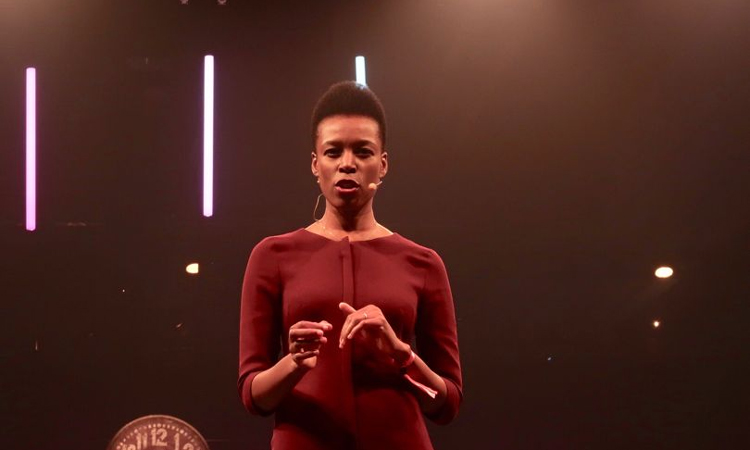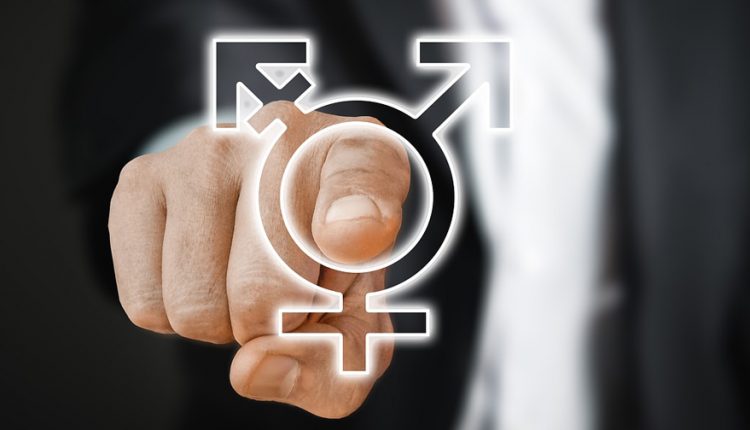You might not automatically think of a tech conference as the first place you’d look for inspiration on gender equality. But that’s exactly what the United Nations has been attempting to do at Slush. The annual tech event took place in Helsinki, Finland, this week.
“We’re here because we need to innovate on gender equality,” says Elizabeth Nyamayaro (pictured), who heads up UN Women’s HeForShe campaign. Making meaningful change, she says, will require something new. “We are here to learn from the tech industry. They are very good at innovation, so what is it we could do to accelerate progress for gender equality?”
But she also hopes that the tech industry can learn from UN Women. The sector is notoriously male-dominated (the conference, Nyamayaro remarks, is ‘a sea of men’). Most tech companies are far from exemplary when it comes to welcoming diverse talent and creating inclusive policies. Sexual harassment is also a major problem, with several women in tech recently coming forward with high-profile stories of inappropriate behavior in the workplace. The #MeToo campaign has shown that these kind of incidents are far from unusual, and in fact plague women in every industry.
Time for men to step up
The HeForShe movement is perhaps particularly relevant to the tech industry and other male-dominated sectors. This is due to its emphasis on solidarity and the need for all genders to commit to gender equality. So what can men in tech do? Nyamayaro highlights a few simple things: Firstly, they need to hire diverse teams. “A lot of tech companies aren’t hiring women; there’s always this sort of misconception that women aren’t good at tech,” she says.

HeForShe has partnered with Slush to raise money for its IMPACT scholarships, which are awarded to female STEM students. But it’s not just a pipeline issue, says Nyamayaro: “Right now, there’s enough women who are very capable of being in the tech industry.”
Men in tech can also help to craft inclusive policies for the workplace, including a commitment to equal pay and a shared parental leave policy. And post- #MeToo, Nyamayaro says it’s time for men to step up and speak out against sexual harassment. “There are some very high profile cases that have come out, and you see that men are just very silent about it,” she says.
Companies can help by making sure they have a policy on sexual harassment – something that many workplaces still lack – and by making sure it is correctly implemented. Proper reporting channels and support should be available for those who come forward, and consequences for the perpetrator. “That’s not always the case,” says Nyamayaro. “A perpetrator often has a lot more power than the woman or man who is going through this, and I think we almost forget that sexual harassment isn’t about sex; it’s about power, and what someone will do to take that power away from you.”
Quantifying gender equality
These may seem like basic provisions, but many organisations struggle with them. To really force change, it’s imperative that the message comes from the top, says Nyamayaro. Unless the CEO makes it a priority, it won’t get done. Measures to improve gender equality also need to be concrete, and quantifiable.
“As long as the struggle for gender equality is seen as a struggle between men and women, nobody’s going to win, because we all lose.”
Elizabeth Nyamayaro
With its IMPACT 10x10x10 pilot initiative, launched by actor and UN ambassador Emma Watson at the 2015 World Economic Forum in Davos, HeForShe has been working with 30 male leaders – including heads of state, CEOs of global companies, and university heads – to specify gender equality goals. This requires companies to open up their data and commit to achieving goals. These include equal pay, fair parental leave policies and gender parity in senior leadership by 2020. These are measurable criteria that the companies involved will have to publicly defend.
Nyamayaro is keen to stress that pushing for gender equality is not about ‘helping’ women. “There’s this idea that women are helpless; they are not,” she says. “In fact, there’s nothing wrong with women. We try to fix women – we should fix the institutions that were built by men for men.”
Startups, she says, have no excuse. “It should actually be easier for them, because it’s a very small team,” she says. “So make that conscious decision right when you’re hiring your EC [executive committee] or your board that you have enough women there.”
Innovators needed
While these steps are all good, Nyamayaro emphasizes that the fight for gender equality is very much a work in progress. UN Women is constantly looking for new, scalable ideas to accelerate its mission. It hopes these ideas could come from the tech community. There’s nothing worse, she says, than seeing people use limited resources on measures that she has seen fail many times before.
Nyamayaro is not sure what a tech solution might look like. But she says it could help address the issue in many different ways. She points to mobile banking technologies, such as M-Pesa in Kenya, as an example of how innovation in tech can empower women to do things they may not have been able to before. In this case they are taking control of their finances and trading securely. “I think a mobile phone is the closest thing to a silver bullet when it comes to empowering women,” she says.
What she is sure of is that it will take the commitment of all genders to create a meaningful social movement: “As long as the struggle for gender equality is seen as a struggle between men and women, nobody’s going to win, because we all lose.”

